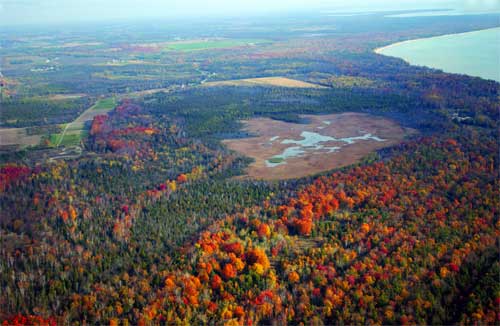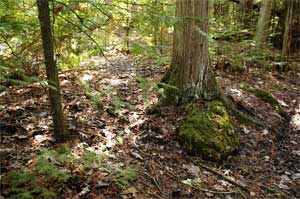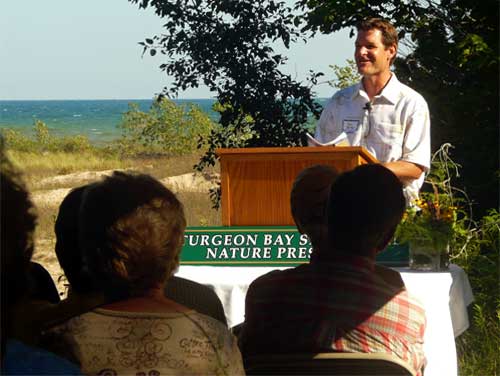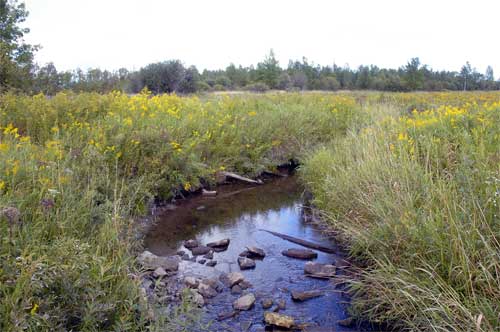The Door County Land Trust announces the purchase of 40 acres at the center of the Kellner Fen, a 400-acre wetland complex located 4 miles north of Sturgeon Bay along Lake Michigan.
The Door County Land Trust established the Kellner Fen Nature Preserve in 2003 and with this recent addition has permanently preserved nearly 150 acres.
“The Kellner Fen is a very special, almost hidden place,” states Dan Burke, executive director of the Door County Land Trust. “The Land Trust is thrilled to acquire the 40-acre parcel at the very center of it all. The uniqueness of this area was once known and appreciated by only a small group of neighboring land owners. Now, because of its rare ecological features, the fen is recognized by the broader conservation community as a place worthy of protection.”
The Kellner Fen features a large expanse of open water and an extensive, fragile sedge mat that floats on top of the underlying water. It is protected on the east by a sand dune nearly a mile long and is surrounded on other sides by dense forests. The fen provides habitat for rare and unusual wetland species of insects, plants, and birds and is a breeding ground for the federally-endangered Hines Emerald Dragonfly. The fen is home to a number of orchids such as the arethusa and carnivorous plants such as sundews and pitcher plants. Sandhill Cranes are common visitors and nest on the edges of the lagoon.
Aside from its outstanding ecological attributes, the Kellner Fen also has a rich cultural history. Kellner Fen was once home to a small cranberry operation on the northeastern portion of the lake. A manmade drainage ditch and dam allowed flooding of the fields for harvest. The fen was also home to a frog farm in the first part of the 20th century, a time when frog legs were a popular item on restaurant menus.
The Kellner Fen is one of Door County’s embayment lakes. Embayment lakes and wetland complexes are found along the east side of the Door Peninsula and Washington Island and were once part of Lake Michigan. Water currents and shifting sands closed them off from the larger lake and created separate microcosms. Clark Lake, Kangaroo Lake, Mud Lake and Europe Lake are just some of Door County’s embayment lakes. Kellner Fen differs from the other embayment lakes as it has no natural outlet to Lake Michigan and is completely isolated by natural sand deposits and subsequent dune formation.
“The remoteness and the ecological diversity found at this wetland area put it high on our wish list of places to protect,” explains Jodi Milske, stewardship coordinator for the Door County Land Trust. “Remote as it is, the fen has not escaped invasion by non-native plant species like glossy buckthorn and phragmites. One of things we’ll be working hard on in the coming months and years is the eradication of these invasive species.”
Funds for this most recent 40-acre purchase were provided by a Coastal Wetlands grant from the U.S. Fish and Wildlife Service. Private donations from Land Trust supporters also helped make the purchase possible.
The Door County Land Trust is a local, non-profit organization supported by over 2,000 contributing members. Its mission is to preserve, maintain and enhance lands that contribute significantly to the scenic beauty, open space and ecological integrity of Door County. Since its inception in 1986, the Land Trust has protected over 5,300 acres throughout Door County. Many of the lands owned by the Door County Land Trust are open to the public for hiking, hunting, birding, skiing and other low-impact recreational and educational activities. To find out more about the work of the Door County Land Trust, for preserve maps and directions, for information on their hunting program and to make a contribution of support, please visit www.doorcountylandtrust.org.







